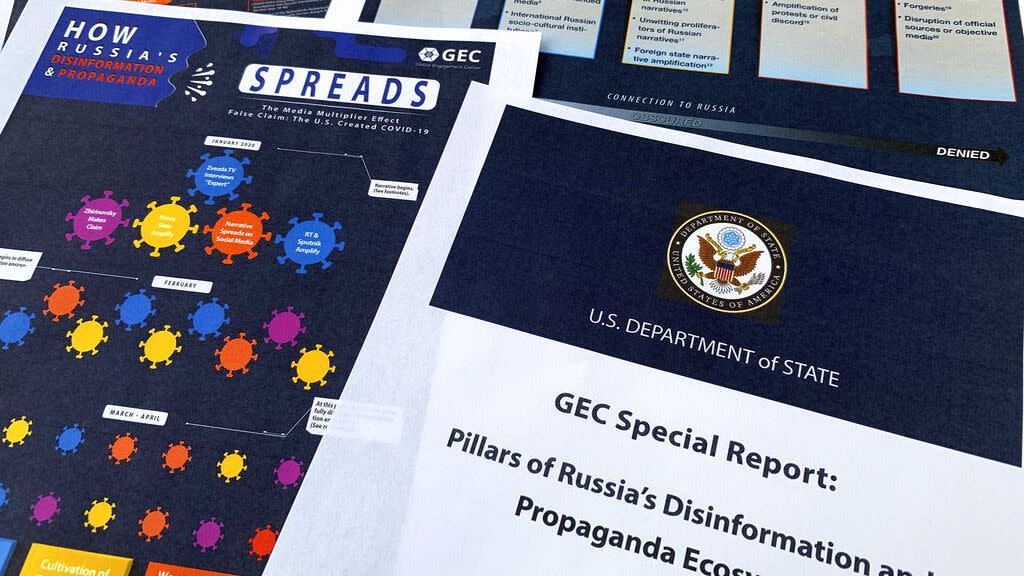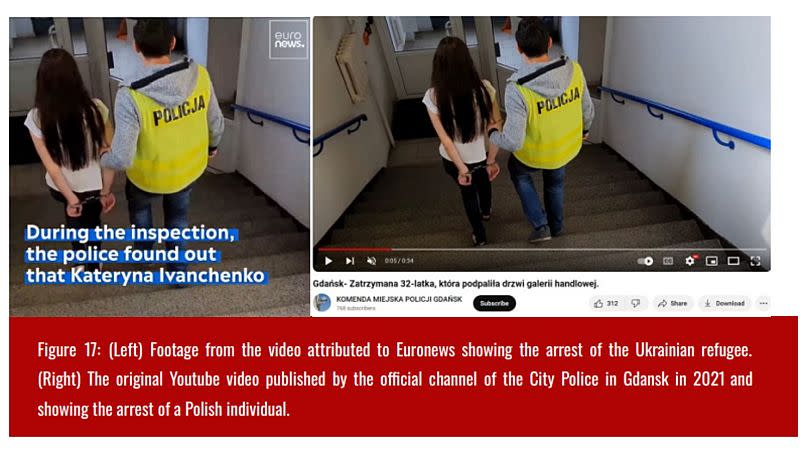Russia deliberately flooding newsrooms with fake content to overwhelm fact-checkers, study says

Pro-Russian actors are purposefully barraging journalists with fake news in an effort to spread verification resources thin and amplify the reach of disinformation, according to a new study.
Dubbed “Operation Overload” by Finnish software and methodologies company Check First, which published the report, the ongoing scheme involves anonymous pro-Russian actors who contact journalists in a coordinated campaign to have them verify suspected fake news.
The ploy relies on the simple principle that “all publicity is good publicity”.
The verification requests usually target Ukraine, France and Germany and take the form of emails and social media mentions.
Operation Overload has targeted more than 800 news organisations in Europe and beyond so far, hitting them with around 2,400 tweets and more than 200 emails.
Telegram has also played a significant role, with most of the links sent to journalists taking them to the messaging app.
Check First found that more than 250 fact-checks mentioning the false narratives created for Operation Overload have been published in the past few months.
For example, the sender of one email cited in the report poses as a concerned citizen who has supposedly seen suspicious claims in Russian media and asks journalists to take a look.
In another, the author makes it clear they want any fact-checks to be shared widely so they can be seen by as many people as possible.
This proves Operation Overload’s goal to reach wider audiences, whether the story is debunked or not, according to Check First.
Promoting the Kremlin's 'military agenda'
The culprits use what Check First calls “content amalgamation”, where they blend different content types to create a credible, multi-layered story.
The flood of media creates a false sense of urgency among journalists, leading to the scheme’s success.
“The operation serves both domestic propaganda and FIMI [foreign interference and information manipulation] purposes,” Check First said. “While our report mainly concentrates on the latter, it is essential to acknowledge that the considered fake content originates on Russian social media platforms and spreads on Russian-language websites and blogs, including state media outlets, with the manifest aim to promote the Kremlin’s military agenda to local audiences.”
Much of the fake news takes the form of videos and creates narratives to discredit Ukrainian refugees living in the West.
This video, for example, uses Euronews’ assets to spread the story that a Ukrainian beauty salon in Poland is exposing clients to mosquito bites to help them lose weight.

A reverse image search shows that the footage was taken from a YouTube video aired in 2021, in which a Polish woman is arrested in Gdansk. It has nothing to do with Ukraine or Ukrainians at all.
Another video wrongly attributed to Euronews uses old footage of French economist Philippe Aghion to talk of France’s allegedly deepening economic crisis.
Where does fact-checking go from here?
While it may seem like the effectiveness of fact-checks has been called into question, Check First urges journalists to stay vigilant and redouble their efforts to clamp down on misleading content.
The firm encourages journalists to verify the identity of anyone sending in their concerns via email or social media.
“When receiving emails or DMs, especially when alluding to "Kremlin propaganda", be wary of unsolicited emails and direct messages that contain links or attachments related to Ukraine, Russia, or other politically sensitive topics,” Check First says.
Fact-checkers are encouraged to collaborate across media outlets to identify patterns and potential coordinated efforts, enhancing collective awareness and response.
Check First also suggests that media outlets enhance cybersecurity training and best practices, such as reporting suspicious emails.
“Train your team to recognise content amalgamation, where different types of manipulated content are combined to create a more convincing false narrative,” it says.
“This includes understanding how related videos, images, and text can be spotted on multiple dubious outlets or posted by suspect accounts on social media.”

 Yahoo News
Yahoo News 
